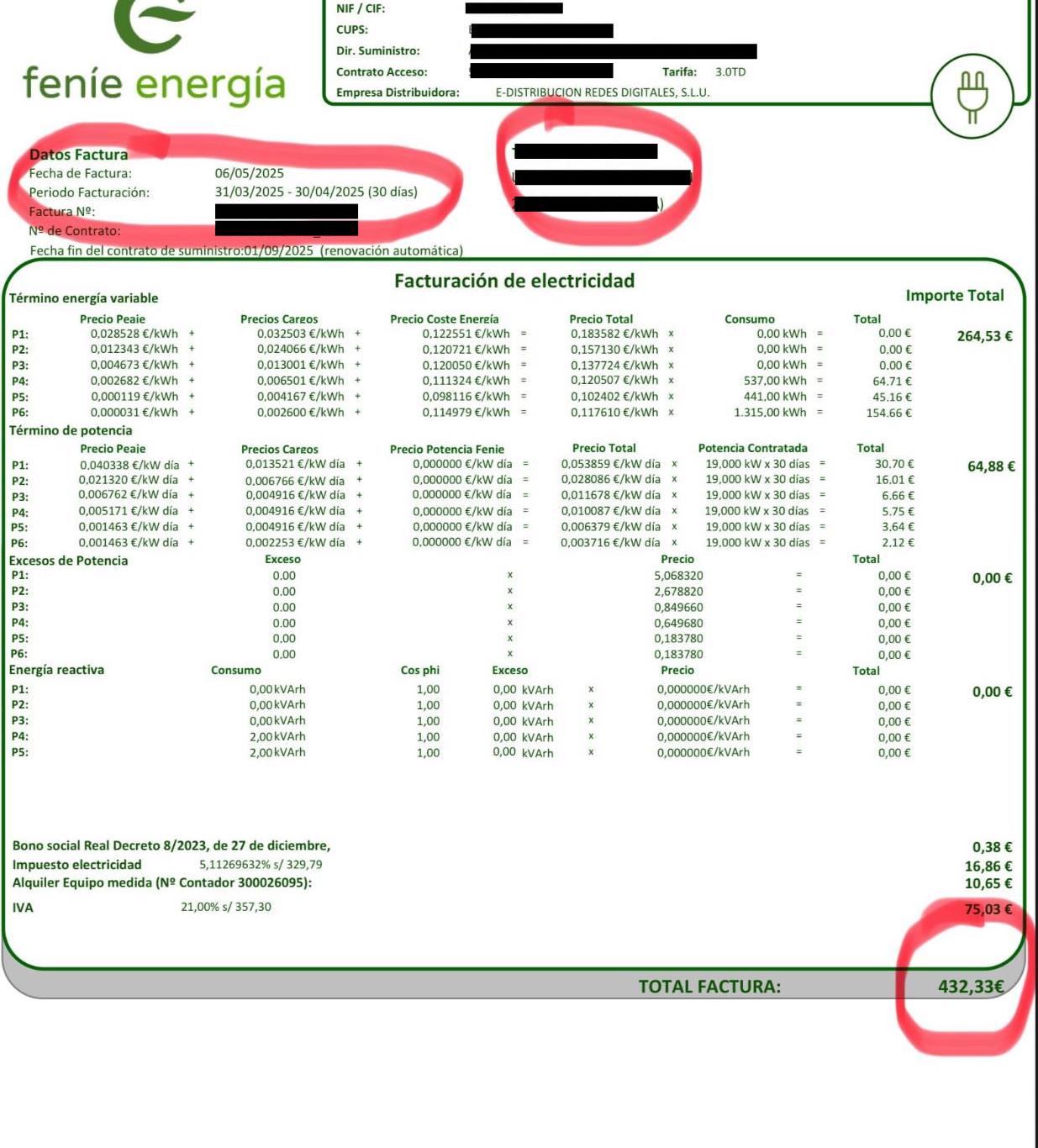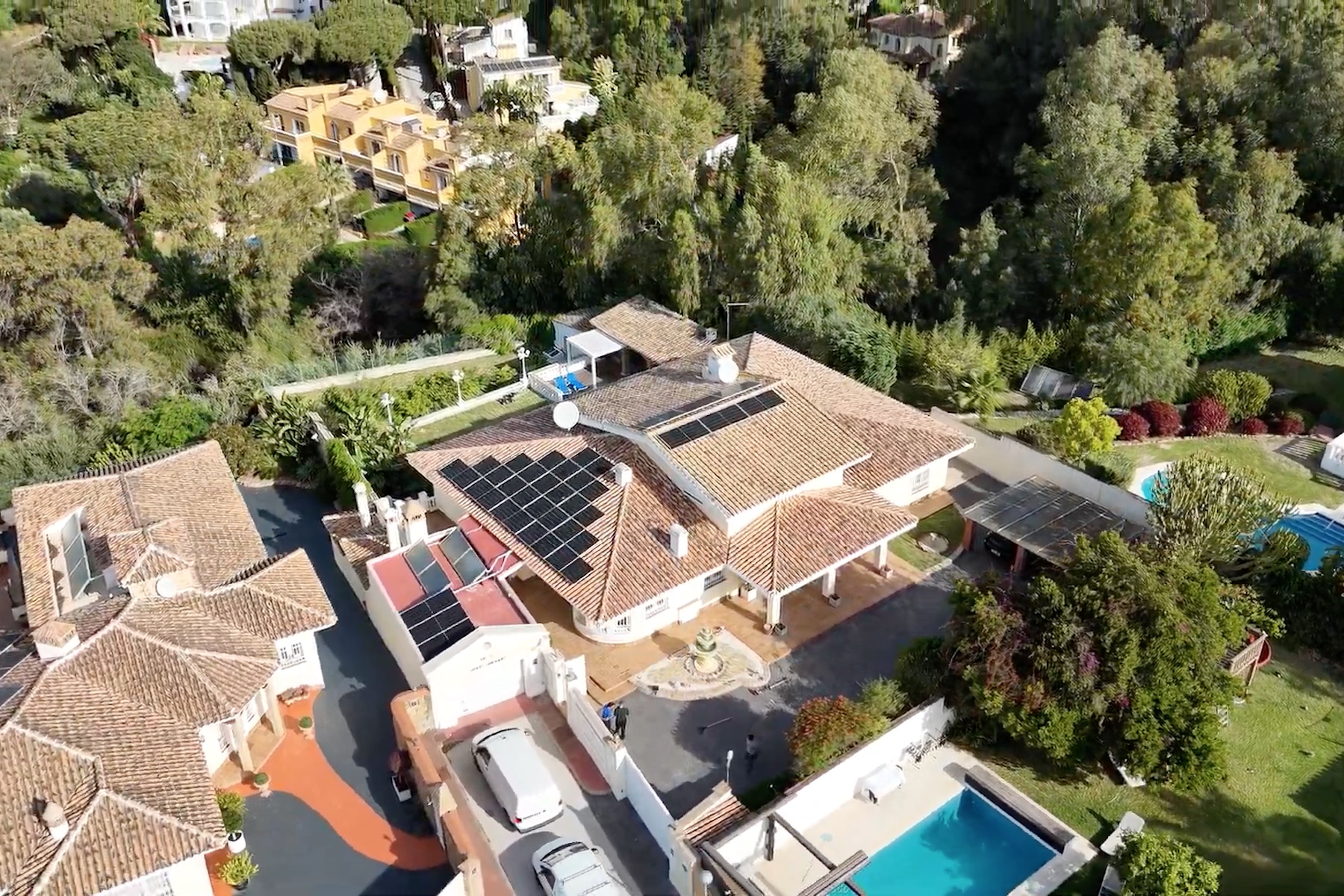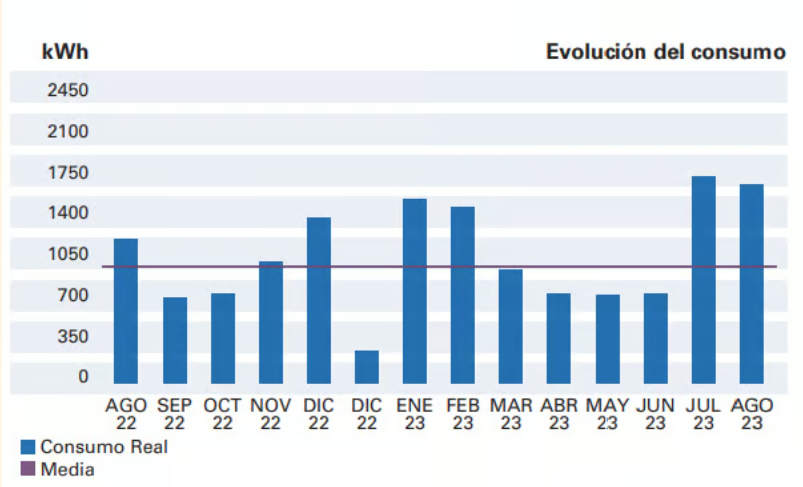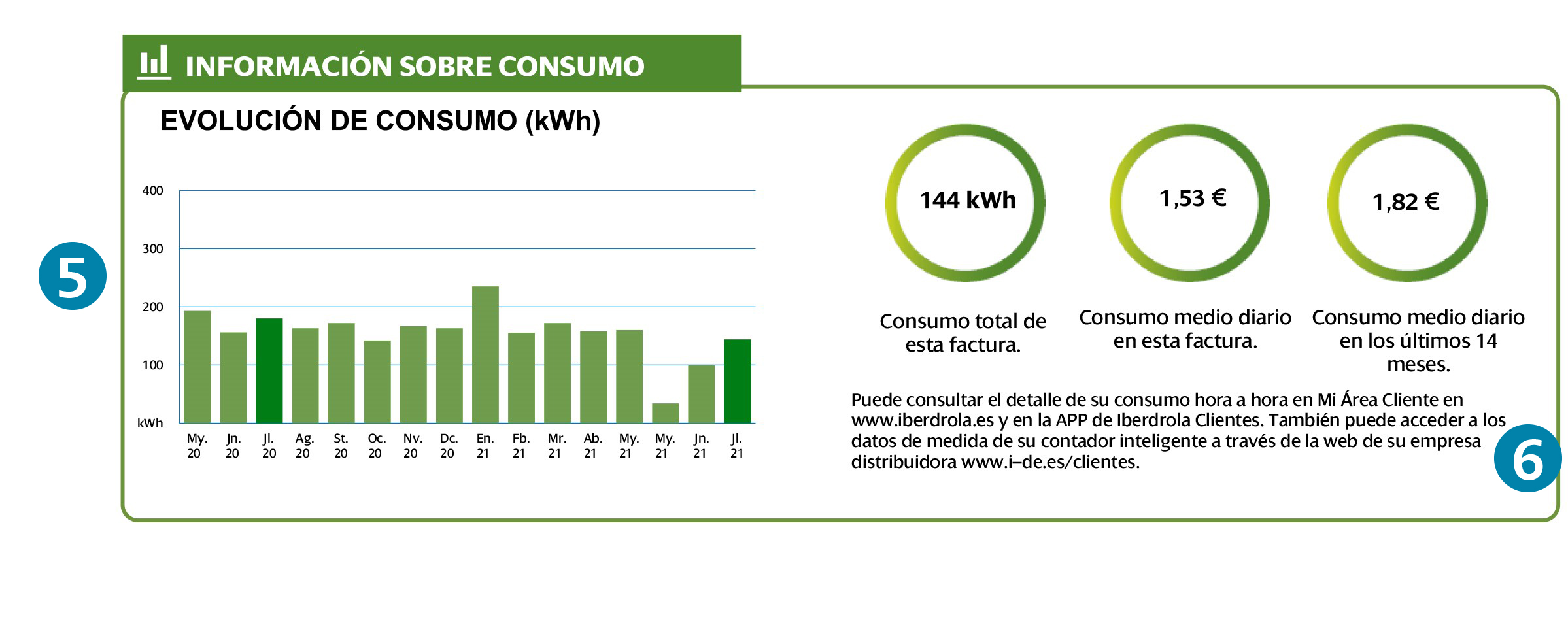
Pietro Marchi is a solar representative for Marblanc Solar, in charge of liaising with potential clients for our free solar survey.
Is the break-even period a major factor in whether you go solar?
You’re not alone.
I’d say that for four out of five homeowners I’ve spoken to on the Costa del Sol (and that’s 400+ homeowners so far this year) the primary interest is saving money.
A well-designed solar installation should recover its own costs in 3 to 7 years. But Marblanc Solar recently completed an installation for a homeowner in Marbella that will pay for itself in under one year.
How is this possible?
In this article, I’ll explain how we achieved this, and then cover the 4 key steps to calculate your own break-even period with solar.
Try the Solar Break-even Calculator
Want to save time figuring out your own expected break-even period with solar?
In 1-2 minutes, our online solar calculator will estimate your:
Break-even period
Annual electricity savings for the next 10 years
IBI (property tax) reduction
IRPF (personal income tax) reduction
Click below to get started.
Solar calculatorCase Study: Solar Installation With a 6-month Payback Period
DISCLAIMER: Marblanc Solar can’t guarantee you’ll break even on your solar installation in under a year. Every home is different, and this case study is purely informational.
We recently completed a 39-panel solar installation for a homeowner in Nueva Andalucía in Marbella. It’s on track to break even not only in under a year… but in under 6 months.
How?
The homeowner came to us with a high electricity bill – around €3,300 per month, with some summer months spiking above €4,000. The property ran several high-consumption systems day and night, including air conditioning units, pool heaters, and other energy-intensive appliances.
This is their bill from July 2024:

But just two months after installing with Marblanc Solar, their electricity bill dropped to €432.
That’s a monthly saving of €3,568!
Which means they’re now on course to save nearly €40,000 per year…

This is a unique case. It’s not typical of all of our solar installations on the Costa del Sol.
But it does highlight two key points:
- The higher your current electricity bill, the faster your potential break-even
- An 80% saving is the sweet spot for a short payback period
Let’s now explore quickly why 80% savings is what we recommend at Marblanc Solar.
Why 100% Bill Reduction Doesn’t Mean Faster Payback
It’s a common assumption: if you go solar, the goal is to eliminate your electricity bill.
But aiming for a €0 bill can slow down your payback period.
Here’s why.
If you’ve seen ads from solar companies promising €0 electricity bills, what they usually mean is €0 energy consumption charges. In reality, your electricity bill will include more than just the cost of actual electricity.
You still need to pay:
– Contractual charges (also known as potencia or contracted capacity)
– Electricity taxes (such as the Impuesto Eléctrico and VAT)
– Meter rental fees
– Subscription costs if you’re with a specialist solar energy provider
And there’s something else to consider.
Unless you install a solar battery, your panels can only power your home during daylight hours. Even if you have a virtual battery plan (which allows you to ‘bank’ excess daytime solar electricity) the rates don’t always work in your favour.
You’ll pay a little ore to buy electricity back from the grid than you earn selling it.
That’s why reaching 100% bill savings usually requires:
- A large array of solar panels, and
- A battery system to store your excess energy
In some cases, depending on your current electricity bills, the cost of adding the battery may extend the payback period to 5–7 years or more.

For some clients – such as this 24 solar panel installation in Calahonda – having a solar battery to avoid frequent blackouts is more important than a faster payback period.
Are Savings Your #1 Priority?
As I mentioned earlier, four out of five homeowners I speak to are focused on savings and break-even timelines.
But that’s not always the case.
I’ve met many clients in areas like Estepona, Calahonda, and Sotogrande, where weekly blackouts are the norm. They want energy independence, and that means a solar battery and a backup box. For these clients, a fast payback period is secondary.
There’s also the question of aesthetics.
Take this installation of 18 solar panels in Nueva Andalucía, for example. We could have installed more panels to improve the payback time. But the homeowner didn’t want to cover more of the roof.
In the end, solar isn’t always just about numbers.
4 Steps to Calculate Your Solar Payback Period
Ok, let’s get into the 4 steps to calculate your solar payback period.
In my experience, these are the factors that mean the difference between breaking even in 3-5 years or 5-7 years and more.
Step 1: Start with your electricity bills
When it comes to calculating your solar break-even point, your current electricity bill is the most important place to start.
If your bills are low – say around €40 per month or €500 per year – then your payback period is likely to be much longer.
As we explain in our 5-step guide to installing solar panels in Marbella, a smaller 5kW system can cost between €5,000 to €7,000. So if you can only save around €500 a year on electricity, you’d be looking at a 10-year break-even period or more.
On the other hand, the higher your bill, the faster you recover your investment.
Most of our clients who achieve a break-even period under five years run multiple high-consumption appliances, such as:
- Air conditioning units
- Pool pumps and pool heaters
- Heat pumps
- Underfloor heating systems
- EV chargers
The Two Figures to Find in Your Bill
To start, we’ll need two figures from your bill:
- Your average monthly consumption (kWh)
- Your total annual electricity cost (€)
Your monthly electricity bill usually includes a bar graph showing your usage over the past 12 to 14 months. The usage should be in kWh – which is the unit of measurement for electricity.
During our free solar survey, we use state-of-the-art solar software to calculate this.
But there’s a rough method:
- Find the graph showing monthly usage
- Use your finger to trace a line between the highs and lows
- Find a kWh figure which is roughly in the middle

Next, we need to find the annual cost.
Look for the line labelled Consumo medio diario – this is your average daily cost. Multiply that figure by 365 to estimate your annual electricity spend, which you’ll need for your break-even calculation in Step 3.

Don’t Forget About Inflation
It’s also important to factor in inflation when calculating long-term savings.
In Spain, the average electricity price inflation over the past 10 years has been 2.9% per year, according to the Instituto Nacional de Estadística (INE). That means your electricity bill today is likely to be much higher in five or ten years, and going solar now can protect you from those rising costs.
Want to see what that looks like?
When you use our solar break-even calculator, you’ll see a chart of your expected annual electricity costs for the next 10 years (without solar).
Step 2: Average daily peak solar hours
The Costa del Sol is one of the sunniest regions in Europe, with over 3,000 hours of sunshine per year. That’s a huge advantage when it comes to producing solar energy.
But when calculating your break-even period, what really matters is not total sun hours, but “peak solar hours.”
A peak solar hour is an hour in which the sunlight is strong enough for your panels to work at or near their maximum capacity. It’s a standardised measure used across the solar industry to estimate performance.
In Marbella, you get an average of 6 peak solar hours per day throughout the year.
Make a note of that figure – we’ll need it in the next step!
Step 3: Calculate Your Ideal System Size
Your solar system size is measured in kilowatts (kW). Now that you know your average monthly consumption and the number of peak solar hours, we can estimate how large your system should be.
Here’s how to do it:
- Take your average monthly electricity consumption in kWh (we found this earlier)
- Divide it by 30 (to get daily consumption)
- Divide that by 6 (the average number of peak solar hours in Marbella)
- The result is your ideal system size in kW
Example:
Let’s say your bill shows an average monthly consumption of 900 kWh
- 900 ÷ 30 = 30 kWh per day
- 30 ÷ 6 = 5 kW system size
So, in this case, a 5 kW system would roughly match your daily energy needs.
Step 4: Calculate your break-even
System prices vary depending on the installer, roof type, and equipment used. But as a rough industry average:
- Multiply the system size in kW by €1,000
- Add €2,000 for installation, inverters, wiring, structure, licenses and legal work
This gives you a general guide – it’s NOT a quote from Marblanc Solar (our pricing is always tailored to the property).
Example estimates:
- A 5 kW system → approx. €7,000
- An 8 kW system → approx. €10,000
Now, Let’s Estimate Your Annual Savings
- Grab your annual electricity cost (we found this earlier)
- Multiply that figure by 0.8 to estimate an 80% saving
That’s your annual electricity saving with solar.
For example:
- If you currently spend €2,400 a year, then:
- €2,400 x 0.8 = €1,920 annual saving with a properly installed system
Working Out Your Break-Even Period
Now divide the system cost by the annual savings:
- System cost ÷ Annual savings = Break-even period (in years)
Using the example above:
- €7,000 ÷ €1,920 = 3.6 years
Of course, this is a basic calculation. It doesn’t include potential battery costs, inflation, future electricity price increases, or grid compensation.
That’s why we built our own online solar break-even calculator. Just enter a few numbers from your bill, and in 1–2 minutes, you’ll get a much more accurate estimate tailored to your property and usage.
Try it out now.
Try the Solar Break-even Calculator
In 1-2 minutes, our online solar calculator will estimate your:
Break-even period
Annual electricity savings for the next 10 years
IBI (property tax) reduction
IRPF (personal income tax) reduction
Click below to get started.
Solar calculatorIgnore This, and You’ll Extend the Break-Even Period by months & years
There’s one more crucial detail about the case study explained at the beginning of this post.
In the first month after installation, the electricity bill dropped to around €700. It’s nearly an 80% saving and still would have guaranteed a break-even period of under 12 months.
But at Marblanc Solar, we don’t stop at the installation.
As part of our post-installation support services, we monitored the client’s electricity usage for two weeks. And we spotted two things straight away:
- They were on an overpriced electricity tariff
- They were running high-power appliances at night
So what did we do?
We switched them to a specialist solar electricity provider, only available through Marblanc Solar. We installed plug timers to shift key appliances – like the pool pump – to run during daylight hours on solar electricity.
By organising their usage and tariff, we helped cut their bill from €700 down to €432 in just one month.
That pushed their savings from 79% to 87% and shortened the payback period even further without changing the system. Most installers don’t offer this level of follow-up. We do, because small details can save you hundreds of euros every year.
Want to Know Your Own Break-Even Period?
In this article, we’ve walked you through an incredible case study – a Marbella villa owner set to break even on their solar installation in under 1 year.
We’ve also explored the main factors that affect your savings, from electricity usage to system size, and given you 4 clear steps to estimate your own break-even period based on a realistic 80% bill reduction.
But to make things even easier, we’ve built a free solar break-even calculator.
In just 1–2 minutes, you’ll get an instant estimate of:
- Your break-even period
- Your total electricity costs over the next 10 years without solar
- Your potential savings over the next 10 years with solar
- Any available solar incentives in your local area
Whether you’re just starting your solar journey or already collecting quotes, it’s a fast, no-pressure way to see what’s possible.
Click below to get started.
Try the Solar Break-even Calculator
In 1-2 minutes, our online solar calculator will estimate your:
Break-even period
Annual electricity savings for the next 10 years
IBI (property tax) reduction
IRPF (personal income tax) reduction
Click below to get started.
Solar calculator
